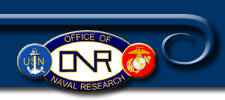|  Golar
Newby Golar
Newby
email: golarnewby@hotmail.com
Mentor:
Ray Gilstrap, NREN NASA Ames
Internship: North Carolina A&T
Title: PCMon
NASA has always been driven to explore the
frontiers of Space and better understand the planet in which
we live. With eleven NASA centers/agencies spread over the
United States the need to unify their efforts towards a singular
goal becomes a challenge. The NASA Research and Education
Network (NREN) team has been working on a ways to offer better
quality of service dynamically within and between centers.
Using strategically placed monitoring computers within a network
environment allows for the observation of network utilization,
with the hopes of allowing another computer system to allocate
more or less bandwidth for a particular application. Within
this research project I was tasked with testing the performance
of the PCMon boxes using three different means of transmission:
wireless, fast Ethernet, and OC-3. These tests where designed
to validate possible problems related to the different modes
of transmission for the network packets. With the project
developing the concern of storage space for datasets became
an issue. The migration of the datasets from several text
files to a MySQL database provided much needed organization
to the naming scheme and storage method. The issue of how
much would the database be able to hold become another problem
I was tasked with. Using Perl and MySQL massive amounts of
data provided a means of testing the database system. The
final issue of concern was security of the information collected
by the various PCMon boxes. Normally this task would implement
a standard TCP encryption technique but since the PCMon systems
used UDP another means needed to be found. Zebedee provided
a quick solution to the problem. Zebedee allows for the communication
channel to be secure using Zlib compression, Diffie-Hellman
key agreement and Blowfish encryption. With better communication
channels between centers information such as data sent from
the Mars rovers can have preferential treatment over the network
allowing for faster transmissions between centers. Such advances
well help in unification of NASA centers for future research
endeavors.
|

